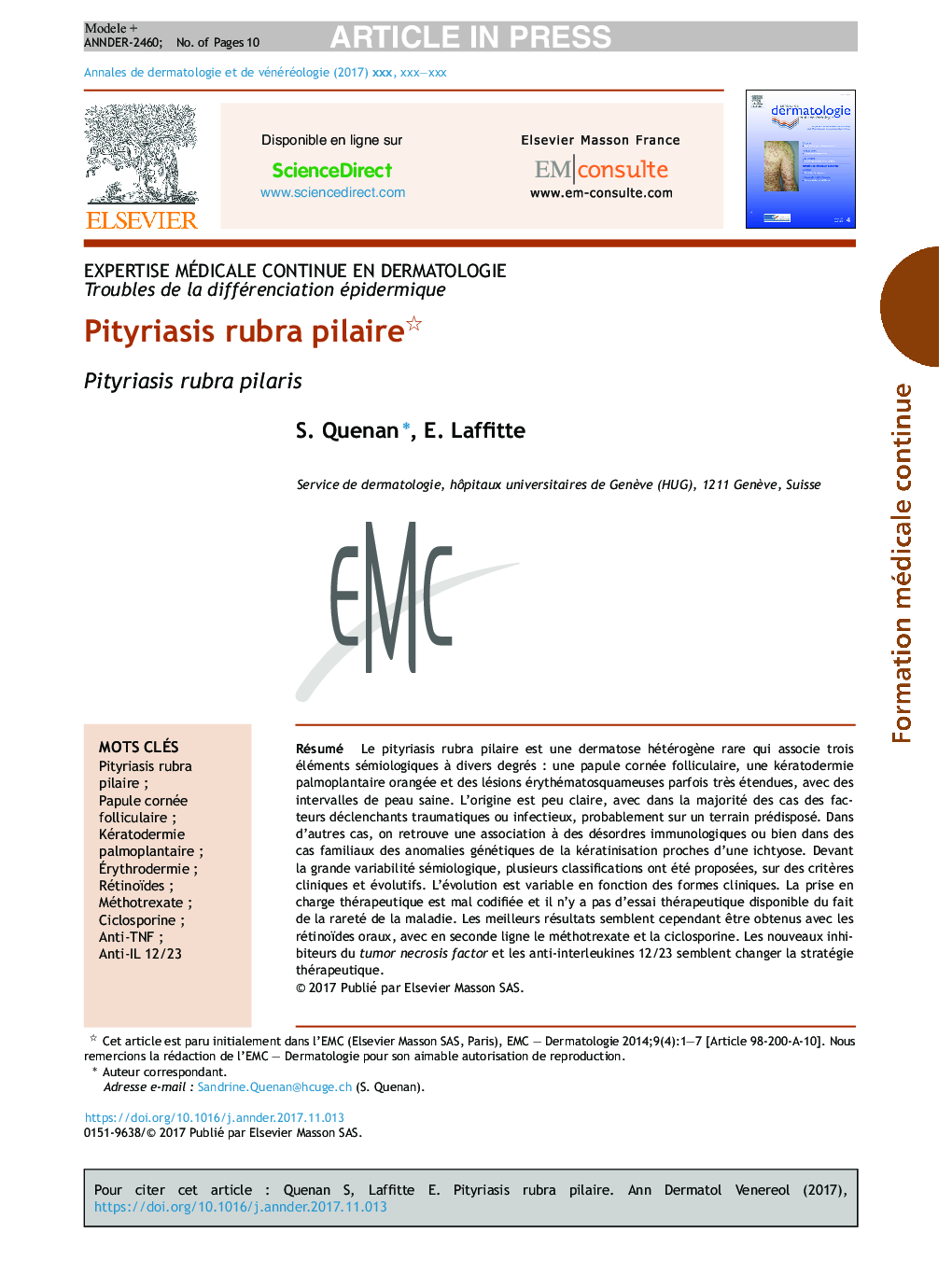| Article ID | Journal | Published Year | Pages | File Type |
|---|---|---|---|---|
| 8711221 | Annales de Dermatologie et de Vénéréologie | 2018 | 10 Pages |
Abstract
Pityriasis rubra pilaris is a rare heterogeneous dermatosis associating three clinical signs to different degrees: follicular corneal papules, reddish-orange palmoplantar keratoderma and erythematosquamous lesions that may in some cases be very extensive, interspersed with patches of healthy skin. The aetiology is unclear, and in most cases, the trigger factors consist of trauma or infection, probably in subjects with an existing predisposition. In other cases, the condition is associated with immunological disorders or, in familial cases, genetic keratinisation abnormalities similar to ichthyosis. Given the widely varying signs, several classifications have been proposed, based on clinical criteria and outcomes. The outcome varies in accordance with the clinical forms involved. Therapeutic approaches are poorly qualified and there have been no clinical trials due to the rarity of the disease. However, the best results appear to have been obtained using oral retinoids, with second-line therapy comprising methotrexate and cyclosporine. The landscape of therapeutic strategy seems to be changing with the advent of new anti-tumour necrosis factor and anti-interleukin-12/23Â antibodies.
Keywords
Related Topics
Health Sciences
Medicine and Dentistry
Dermatology
Authors
S. Quenan, E. Laffitte,
